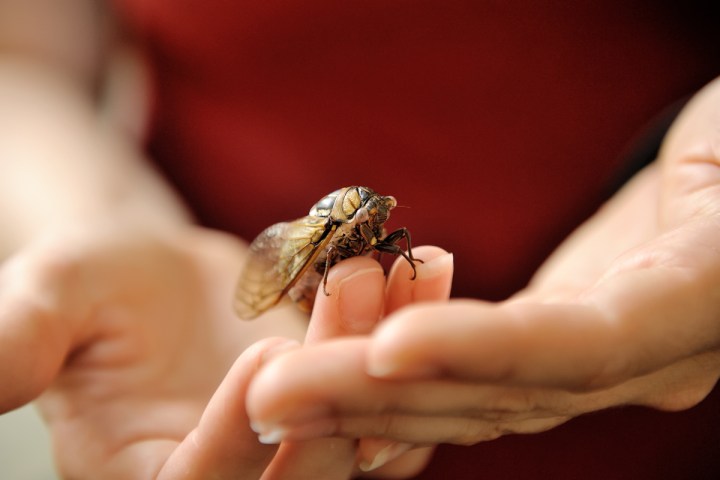
Over millions of years, plants and animals have evolved complex relationships with their environment. Take for example the cicada, a flying insect whose wings can repel water. From a distance their ability to water resistance seems miraculous but, when examined at a nanoscale, the wings reveal a sophisticated structure that has evolved specifically for that purpose.
“Cicada wings have been known to exhibit a slew of interesting properties,” Nenad Miljkovic, a University of Illinois mechanical science and engineering professor who co-led the research, told Digital Trends. These traits include being anti-reflective, superhydrophobic, and anti-bacterial. “We wanted to understand how these functions are achieved and how to mimic them to develop artificial surfaces.”
In previous studies, scientists have zoomed in on cicada wings and discovered tiny structures coated in a thin layer of lipids, which make water molecules roll right off.
“The combination of hydrophobic molecules … and nanoscale roughness, makes the surface superhydrophobic,” Miljkovic said. “The nanoscale roughness is on the order of 100 nanometers.” That’s about 1,000 times smaller than the thickness of a human hair.
But where previous studies focused on wetland species of cicadas, Miljkovic and his team studied four different species from various environments, using high-speed microscopic photography to examine their wings. They discovered that habitat was a surprisingly poor determinant for a cicada’s ability to repel water.
By investigating cicadas and borrowing some of their features, Miljkovic and his team hope to manifest similar properties in synthetic materials. Known as biomimicry — or, as he calls it, bio-inspiration — the practice of borrowing from biology is becoming more popular, and is saving engineers time. But it isn’t a new idea. Velcro was invented by a bio-inspired engineer. And engineers have been looking at lotus leaves for their water-repellent (and self-cleaning) capabilities.
“We are learning from cicadas how to create artificial surfaces based on their natural evolved design principles for the formation of these nanoscale asperities,” Miljkovic said.
A paper detailing the study was published last month in the journal Applied Materials and Interfaces.


